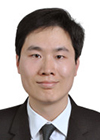
Information Sciences

Chao Chang
Chao Chang, born in Taiyuan City of Shanxi Province in April of 1983, the Chief Scientist and Expert Group Leader of China National Special Zone of Scientific Innovation. He is recipient of 2017 IEEE NPSS Early Achievement Award, the unique annual awardee and the unique Chinese scholar during the last 22 years, 1st recipient of Ministerial level of 2016 Scientific and Technological Progress Award, and recipient of Outstanding Youth Scholar on Nature Science Foundation of China. He is the General Chair of IEEE supported Asia-Pacific conference on Plasma and Terahertz Science (APCOPTS), and Technical Program Chair (TPC) of ICOPS, and TPC of 18th China National Plasma Science and Technology. He is the Chair of IEEE NPSS Xi’an Chapter and IEEE Senior Member, IEEE Trans. Plasma Sci. Guest Editor, Academic Board of China National Key Laboratory of Science and Technology on Space Microwave, and Expert Group Member of China Terahertz Application Committee.
He received Bachelor in 2006 and Ph. D in 2011 from Tsinghua University, and Post-doctorial from Stanford University. He is the Associate Director of Frontier Research Center & Dean of Terahertz Department of National Institute of Defense Technology Innovation, Distinguished professor of Young Talent Program in Xian Jiaotong University and adjunct professor in Tianjing University, doctorial supervisor. He studies high-power microwave plasma and Terahertz Biology, and publishes 44 peer-reviewed papers as first and corresponding author, including 2 PRL and 7 APL. He authorizes 20 China National patents as first and second inventor.
"The novel method and technology on suppressing electron multipactor and improving high-power microwave (HPM) window breakdown threshold by periodic surface and resonant magnetic field"
High-power microwave (HPM) technologies have broad applications in scientific, civil, and military communities. HPM source must work in vacuum, and output window is used to isolate the inner vacuum and outer air and radiate microwave. When the high-peak microwave of billion-watt transmits to window, intense E-field triggers secondary electron multipactor and plasma avalanche at the vacuum/dielectric interface, leading to microwave absorbed and reflected and HPM transmission ceased, and dielectric material gets breakdown. The intense electromagnetic breakdowns seriously limit the HPM maximum power capacity, and become the bottle neck of the HPM technical development and the international challenge.
Prof. Chang established the model of secondary electron multipactor and plasma avalanche in the ambient desorbed gas layer of HPM window, and proposed two kinds of effective methods and technologies to suppress multipactor and improve breakdown threshold, including periodic surface profiles and external resonant magnetic field. The two methods have been demonstrated by HPM experiments in billion-watt level to significantly improve the power capacity by 4 times, breakthrough the power capacity of HPM power capacity. The achievement was honored by IEEE NPSS Early Achievement Award.